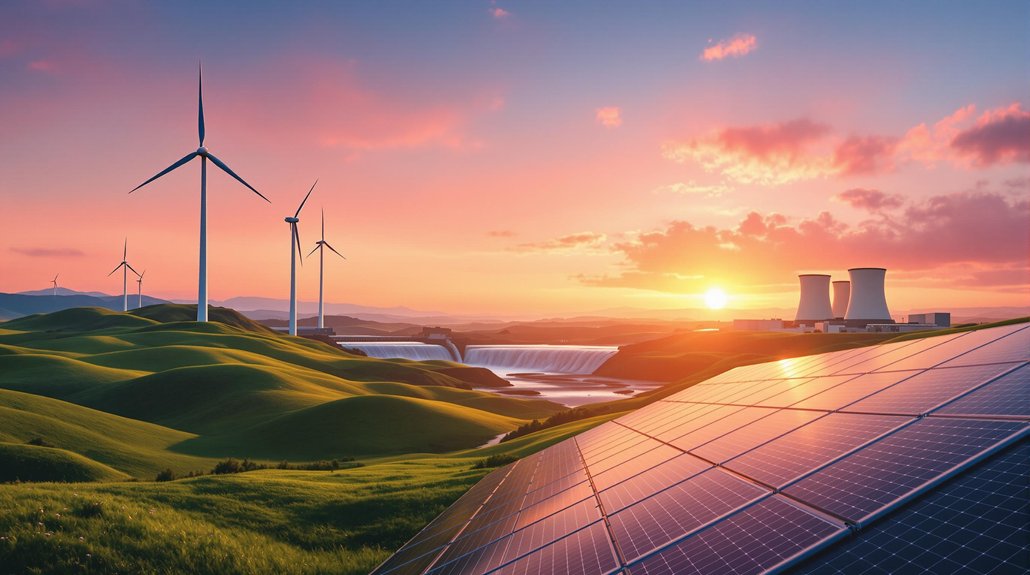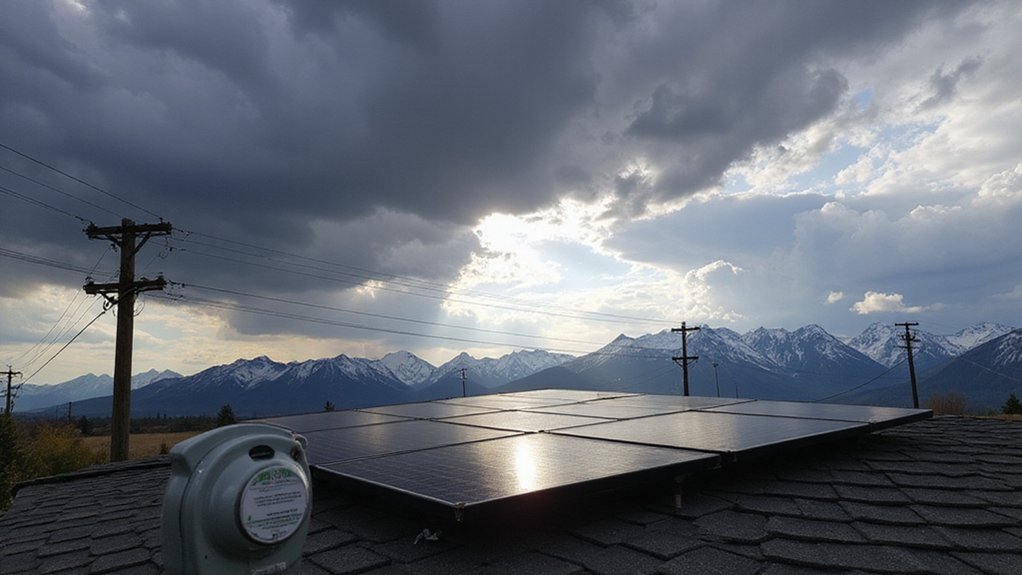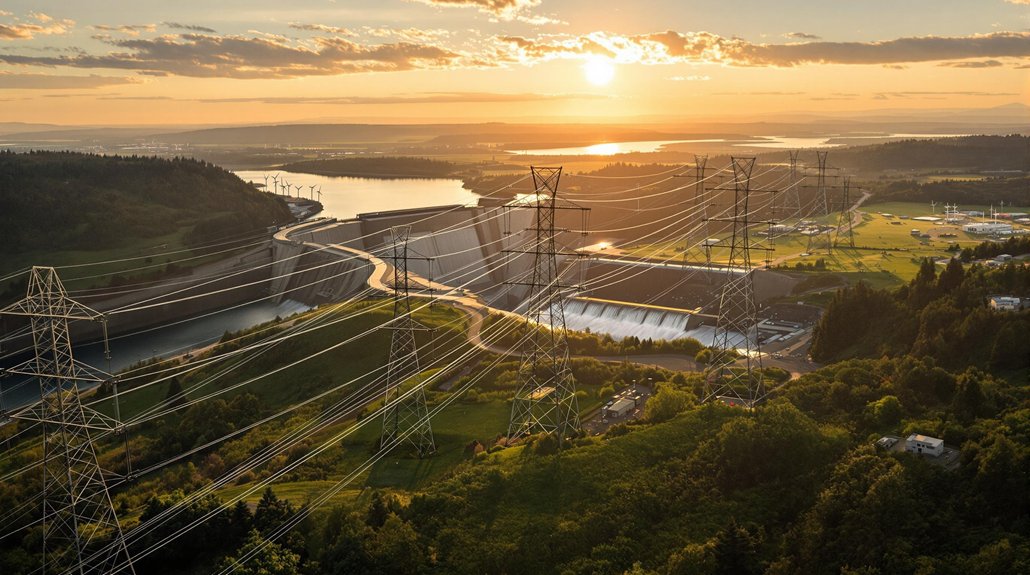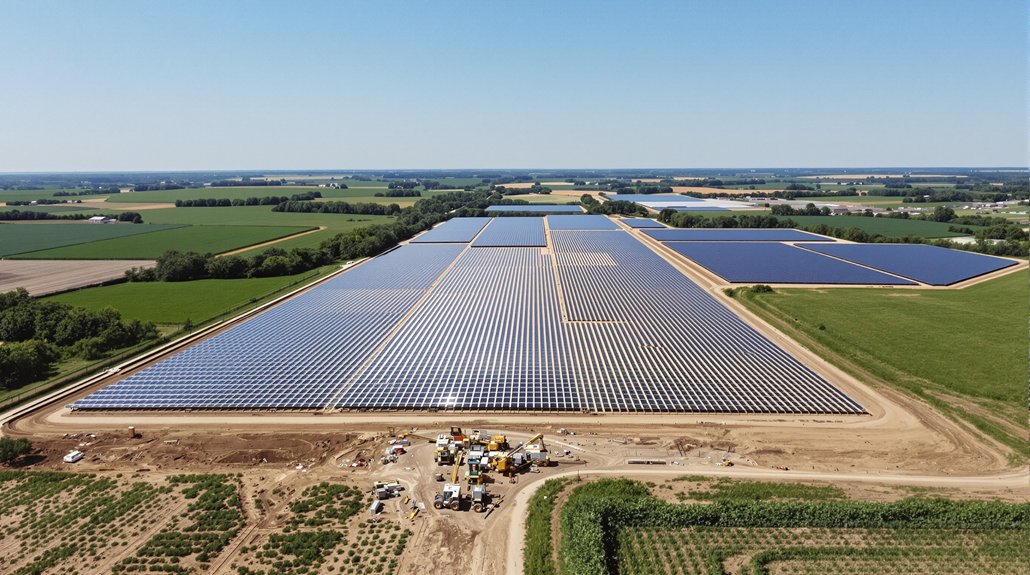Clean electricity has hit 40% of global power generation in 2024—a level not seen since the 1940s. Solar power doubled in just three years, now making up 7% of worldwide electricity. Wind contributes 8%, while hydropower leads renewables at 14%. Europe’s grid is impressively 71% clean, with China installing over half of new global solar last year. This milestone caps decades of pushing for greener energy. The numbers tell an interesting story.
A milestone decades in the making. The world just hit a clean electricity benchmark that hasn’t been seen since people were dancing to Glenn Miller and watching “Casablanca” in theaters. Clean energy now accounts for 40% of global electricity generation in 2024, pulling from nuclear, wind, solar, and other renewable sources.
Solar power is basically showing off at this point. It’s doubled worldwide in just three years and has been the fastest-growing source for 20 consecutive years. That’s like winning MVP for two decades straight. It now represents 7% of global electricity, slightly behind wind power’s 8% contribution. Hydropower remains the big kahuna of renewables, delivering 14% of global juice.
Money talks, and investors are shouting about renewables. The first half of 2024 saw $313 billion poured into clean energy—keeping pace with last year’s massive investments. Even more impressive? A whopping 91% of new power capacity added worldwide came from renewables. Fossil fuels? A measly 6%. Ouch.
Investors are voting with their wallets—91% of new power capacity is renewable while fossil fuels limp along at 6%.
Europeans are the overachievers of the class, with 71% of their electricity coming from clean sources. They’ve pushed solar so hard it actually surpassed coal in their energy mix. Not to be outdone, Asian powerhouses China and India have been installing solar panels and wind turbines like there’s no tomorrow. China alone accounted for more than half of all new solar electricity generated globally last year.
North America’s making progress too, though some regions move at a snail’s pace due to policy hangups. Britain is leading the way among G7 nations, set to become the first to completely end coal usage for electricity generation by closing its final coal plant this month.
The environmental impacts are substantial. Less greenhouse gas belching into the atmosphere. More energy resilience. Thousands of new jobs in manufacturing, installation, and maintenance. Clean energy’s getting cheaper too—solar and wind now compete directly with fossil fuels on cost. No government subsidies needed.
Nuclear power deserves some credit in this milestone. Zero emissions during generation. Reliable base load power. It’s not perfect, but it’s part of the team that just scored a historic goal for planet Earth. Despite the progress, energy storage remains one of the biggest hurdles for widespread renewable adoption.








